Do you wish you had a brighter smile? You aren’t alone: According to a survey by the American Academy of Cosmetic Dentistry, whiter teeth were the most sought-after dental feature among respondents. Fortunately, tooth whitening provides an easy, economical way to get rid of stains and achieve a more aesthetically pleasing smile. Tooth whitening is also safe when performed correctly; contrary to popular belief, whitening doesn’t damage dental enamel or make the teeth more prone to cracking or chipping. However, it’s crucial to approach whitening with the oversight of a dentist; if bleaching is performed too often (or using DIY methods), burns, discomfort, and enamel erosion may occur.
In the following guide, we’ll explain how to whiten your teeth safely and effectively. We’ll also discuss ways to manage tooth sensitivity after whitening and care for whitened teeth long-term.
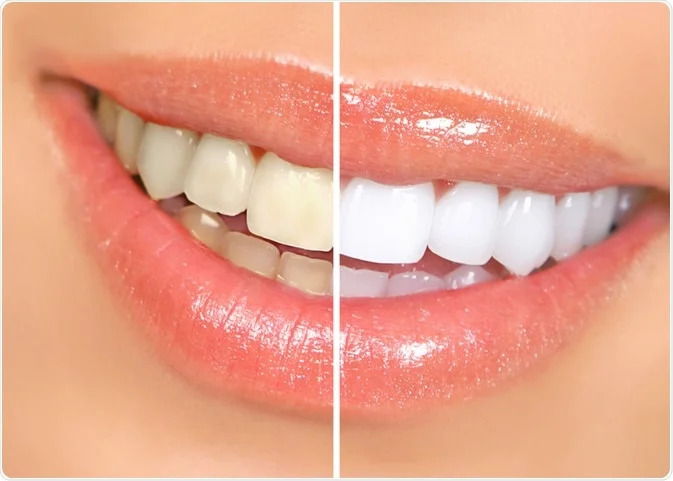
Tooth whitening is a popular cosmetic dental procedure that aims to lighten the colour of your teeth. The process involves tooth bleaching to remove stains and discolouration from the enamel and dentin of the teeth. Special equipment, such as medical lasers or lamps, may also be used to activate the bleach, depending on the type of treatment.
During tooth whitening treatment, the bleaching agent penetrates the tooth enamel and breaks down stains into smaller particles, which makes the teeth appear whiter. This process can be done in-office by a dentist or at home using whitening products provided by a dental professional. Over-the-counter bleaching kits are also available in many pharmacies, along with whitening toothpaste.
It’s important to note that tooth whitening works best on surface stains caused by food, drinks, aging, and smoking. Deeper stains, such as those caused by certain medications, tooth decay, or dental injury, may require alternative treatments, such as dental fillings, veneers, or crowns.
The Dos of Teeth Whitening
Teeth whitening is most effective when conducted with the help of a dentist using only dentist-approved products. To achieve a bright, beautiful smile risk-free, make sure you adhere to the guidelines below:
1. Consult with a Dentist
Before starting any teeth whitening treatment, it’s essential to consult with a dentist to assess your oral health and determine the most suitable whitening option for you. Factors such as existing dental restorations, tooth sensitivity, and oral health conditions can all affect the outcome of teeth whitening, so professional advice is crucial to ensure optimal results without causing harm to your teeth and gums. Your dentist can provide personalized recommendations based on your dental history, existing restorations, and potential risks.
Visiting your dentist before attempting teeth whitening will also help you understand what’s causing your teeth to look dull or yellowed. In some cases, surface stains are the result of plaque and tartar accumulation rather than lifestyle factors. If this is true for you, a professional cleaning will be necessary to remove discolouration. If you have deeper stains, your dentist can educate you on how to change your habits to stop staining from coming back.
2. Choose Professional Teeth Whitening
Opting for professional teeth whitening performed by a dentist is generally considered the safest and most effective way to whiten teeth. In-office treatments are carefully monitored, and the concentration of bleaching agents is tailored to your needs to minimize the risk of sensitivity, gum irritation, and uneven results. If you would prefer to whiten your teeth at home, your dentist may also be able to provide take-home kits that offer a similar level of safety.
This bespoke approach is especially important for people who have existing dental restorations because fillings, crowns, and veneers cannot be lightened via bleaching. Without professional oversight, you may lighten your teeth too much, causing them to look brighter than your restorations.
3. Use Reputable At-Home Teeth Whitening Options
Look for teeth whitening kits with the American Dental Association (ADA) Seal of Acceptance, and check the ingredients before use. As a general rule, it’s better to start with a kit that has a lower percentage of peroxide, as kits with a high percentage of peroxide may cause or worsen tooth sensitivity.
4. Follow Instructions Carefully
If using over-the-counter whitening products, such as whitening strips, gels, or toothpaste, be sure to read and follow the manufacturer’s instructions precisely. Don’t apply the whitening product more often than recommended, and don’t take shortcuts. Overusing or misusing whitening products can lead to tooth sensitivity, gum irritation, or uneven whitening results.
How to Choose the Best Teeth Whitening System
While in-office and at-home teeth whitening can be equally safe and effective when performed under the guidance of a professional, they each have unique pros and cons. The teeth whitening method that works best for you will depend on your individual preferences, budget and desired results.
Read on to learn more about the three main tooth-whitening techniques and how they differ from one another:
In-Office Teeth Whitening
Professional, in-office teeth whitening procedures are typically performed by dentists or dental hygienists. This method involves applying a strong bleaching gel or agent to the teeth and activating it with a special heating lamp or laser to accelerate the whitening process. (A protective barrier is used to prevent contact with the tongue and gums.) In-office whitening treatments can produce significant results in a single session and are tailored to the individual’s needs. As such, they’re ideal for people who want quick, highly visible whitening without any risk of patchiness or gum irritation.
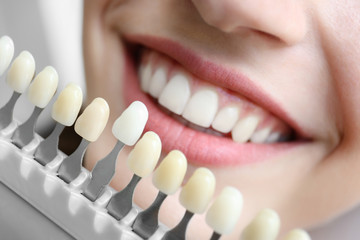
The only downside of in-office whitening is that it’s more expensive than other options. However, in-office treatments can cost as little as $200, so they’re still very affordable for most people.
Take-Home Whitening Kits
Dentists may also provide custom-fitted trays and a whitening agent for patients to use at home. These take-home whitening kits allow for more gradual whitening over several weeks, as the whitening gel is applied to the teeth using the trays for a specified amount of time each day. They are a good choice for people who want a more affordable option than in-office whitening and don’t mind waiting longer to achieve their desired results.
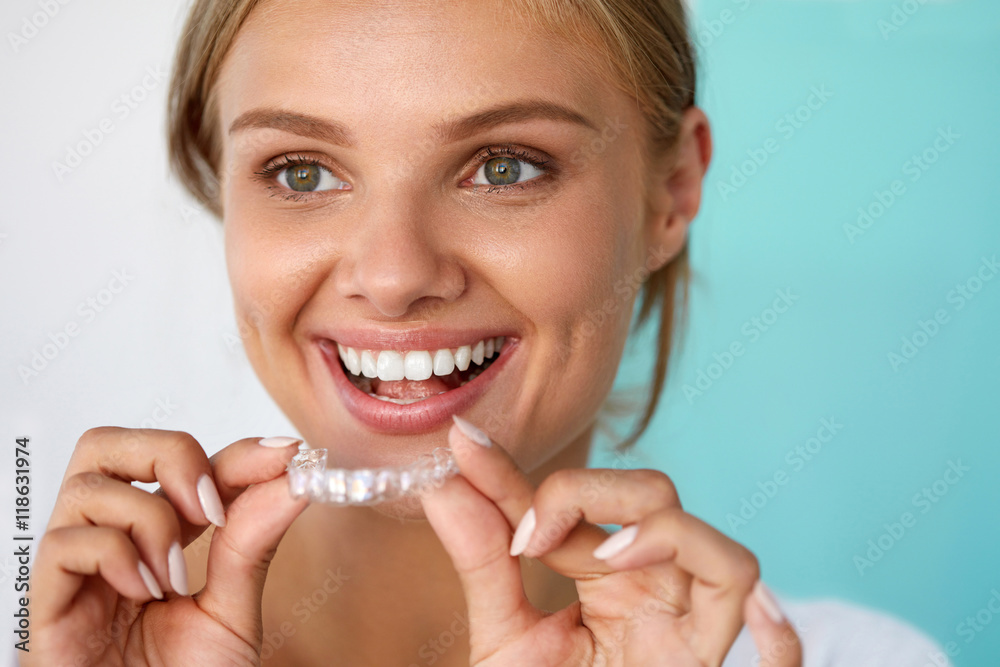
Over-the-Counter Whitening Products
There are various over-the-counter teeth whitening products available without a prescription, such as whitening strips, gels, toothpaste, and mouthwashes. These products typically contain lower concentrations of bleaching agents compared to professional treatments but can still help improve tooth colour and reduce surface stains with regular use.
Over-the-counter whitening products are most suitable for individuals with light staining, as their results are far less striking than in-office treatments. They’re also a good choice for people on a budget, costing as little as $40 for a name-brand kit.
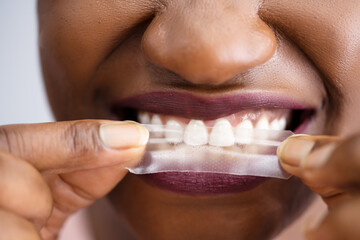
Maintaining Oral Health During Whitening
Maintaining a consistent oral hygiene routine is crucial for a comfortable and successful tooth whitening experience. If you haven’t had your teeth professionally cleaned in the last six months, visit your dentist for a cleaning before you whiten your teeth. Removing plaque and tartar will ensure the bleaching agent reacts with your enamel properly.
Practicing excellent home care is also important: Caring for your teeth and gums throughout the whitening process is one of the best ways to avoid potential side effects, such as tooth sensitivity or gum irritation. Brush your teeth at least twice a day, floss regularly, and rinse with an antibacterial mouthwash to keep your teeth clean and free of stains. For best results, use white toothpaste and clear mouthwash, as there is a risk of dye transfer with coloured oral care products.
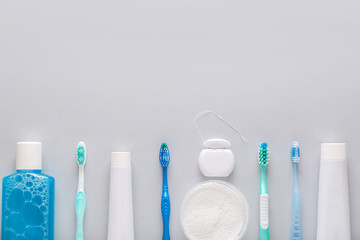
The Don’ts of Teeth Whitening
Before you whiten your teeth, it’s a good idea to debunk common myths and misconceptions about tooth whitening. Make sure you avoid making these common mistakes while pursuing a brighter smile:
1. Overuse of Whitening Products
Though tooth whitening is safe when performed with dentist-approved products, that doesn’t mean it’s harmless. Overusing whitening gels, strips, or trays can result in the teeth becoming extremely sensitive to hot and cold foods and beverages. The gums may also become red, tender, and irritated, potentially making them more susceptible to chronic inflammation and periodontal disease. In rare cases, excessive whitening may damage dental enamel, making teeth more brittle and giving them a translucent appearance.
2. Using Homemade Remedies
Some people wish to use natural teeth whitening methods (such as baking soda, activated charcoal, or hydrogen peroxide) to brighten their teeth. While these methods may have some whitening effects, they also carry a high risk of enamel damage due to the abrasiveness of baking soda and other common DIY whiteners.
3. Ignoring Dental Health Issues

Underlying dental problems, like cavities or gum disease, can lead to significant pain, discomfort, and other complications during tooth whitening. Whitening treatments can also cause permanent damage to severely decayed teeth.
4. Failing to Practice Proper After-Care
Immediately after having your teeth whitened, you should avoid smoking, consuming coloured foods and drinks, or using coloured dental care products. You should also wait at least four hours after a professional whitening treatment before brushing your teeth to give your dental enamel time to remineralize.
Managing Sensitivity and Discomfort
If your teeth feel sensitive after whitening, try using a desensitizing toothpaste and avoid consuming hot or cold food or beverages for a few days after each treatment. If sensitivity persists, talk to your dentist about reducing the frequency of your treatments or using a milder bleaching solution.
Long-Term Maintenance After Whitening Teeth
The results of a single professional teeth whitening treatment can last anywhere from six months to three years. To prevent future staining and preserve the appearance of your smile after whitening, take the following steps:
1. Use a Whitening Toothpaste
Consider using a whitening toothpaste to help maintain the brightness of your teeth after treatment. Whitening toothpaste contains mild abrasives or polishing agents that can help remove surface stains and keep your teeth looking bright.
2. Limit Staining Foods and Beverages
Reduce your consumption of foods and drinks that may stain your teeth, such as coffee, tea, red wine, dark colas, and blueberries. If you do consume these substances, rinse your mouth with water afterward or brush your teeth to minimize staining.
3. Avoid Use of Tobacco Products
If you smoke, quitting can help prevent yellowing and staining of your teeth. Smoking cessation will also benefit your overall oral health by reducing your risk of tooth decay and gum disease.
4. Attend Regular Dental Check-Ups
Schedule dental check-ups and cleanings at least once every six months to monitor the health of your teeth and address any concerns related to whitening. Professional cleanings remove surface stains before they become permanent and prevent discolouration related to tooth decay, so they’re critical to maintaining a bright, attractive smile.
5. Consider Touch-Up Treatments
Depending on the type of whitening treatment you receive, touch-up treatments may be a good option to maintain an optimal level of whitening. Consult with your dentist to determine the best schedule for touch-up treatments based on your individual needs.
6. Protect Your Natural Teeth
If you grind your teeth or participate in contact sports, consider using a mouthguard to protect your teeth from damage. Tooth grinding can wear down enamel and reduce the effectiveness of whitening treatments, in addition to making teeth more susceptible to unsightly cavities, chips, and cracks.
Conclusion
Teeth whitening is a quick, affordable way to improve the appearance of your smile and boost your confidence. However, while tooth whitening is generally safe and effective, it’s essential to consider factors such as existing dental restorations, tooth sensitivity, and oral health conditions before undergoing this treatment. Guidance from a dental professional is therefore strongly recommended, whether you want to whiten your teeth in-office or at home.
If you’re looking for advice on tooth whitening in Mississauga, Dr. Dalmao and associates can help: Our extensive experience performing restorative and cosmetic dentistry allows us to make tailored recommendations that fit each patient, ensuring beautiful results. We also utilize cutting-edge teeth whitening technology for optimal patient comfort and safety. Contact us today to schedule an appointment and achieve the smile of your dreams.
